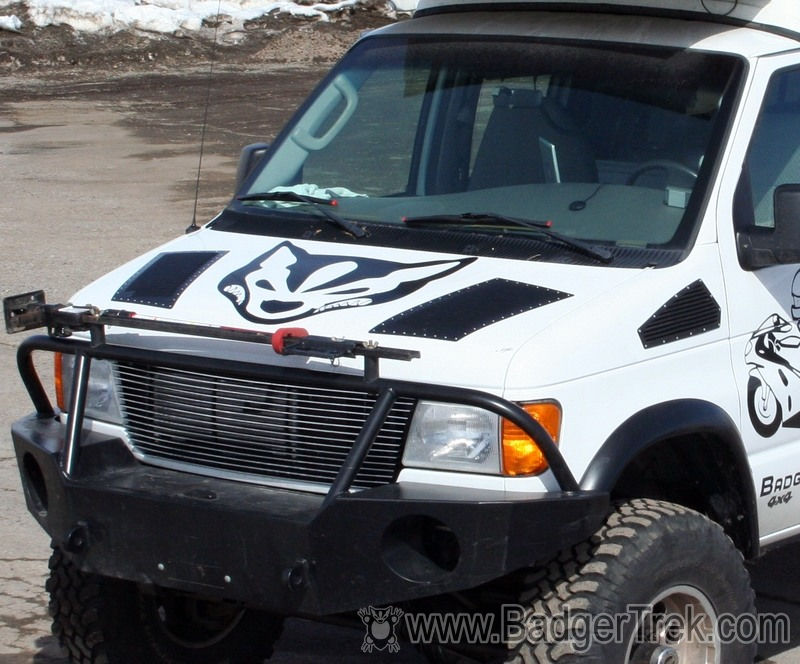You are using an out of date browser. It may not display this or other websites correctly.
You should upgrade or use an alternative browser.
You should upgrade or use an alternative browser.
Hood louvers and hood scoops
- Thread starter LaOutbackTrail
- Start date
rayra
Expedition Leader
Allot of folks simply put a bushing or spacer between the back of their hood and the brackets to lift the rear of the hood up an inch or a few centimeters. Doesn't damage the hood and helps alleviate some of the venting issues that so many here have mentioned.
This is an old skool trick on muscle cars in the 50s-70s and akin to the mods on Cal Bugs in the 80s+ which gapped the top of the engine cover
.jpg)
WanderinWhitlows
Observer
This is an old skool trick on muscle cars in the 50s-70s and akin to the mods on Cal Bugs in the 80s+ which gapped the top of the engine cover
.jpg)
Yes, we did that with Type 1's when we were younger as well when running dual stack Dellorto 40's so they could breathe better.
Scrapdaddy
Adventurer
bluejeep
just a guy
http://oman4x4.com/hoodvents.htm#theory A good study done, shows interesting results with supportable evidence.
Has anyone done a study of the outside pressure along the vertical sides of a Wrangler hood? My instinct wants me to believe it would be a nice low pressure area because of the speed of the air flowing by, but ........???
Combine that with an 'assumption' that the underhood temp would be high along the vertical inside surface because it is high along the top of the hood along the sides, towards the back regions of the sides (as shown in red in the above study), and maybe vertical side louvers would be quite effective.
Has anyone done a study of the outside pressure along the vertical sides of a Wrangler hood? My instinct wants me to believe it would be a nice low pressure area because of the speed of the air flowing by, but ........???
Combine that with an 'assumption' that the underhood temp would be high along the vertical inside surface because it is high along the top of the hood along the sides, towards the back regions of the sides (as shown in red in the above study), and maybe vertical side louvers would be quite effective.
bluejeep
just a guy
Here are images of my ugly fender vents and the scribe marks for cutout of area for reverse air intake scoop directly over air box I'll make a gasket assembly to seal hood scoop to top of air box.
View attachment 108054View attachment 108055View attachment 108056
Any additional pics of your side vents? I'm convincing myself to try this on my Wrangler. Living in TX it is getting quite hot, and will be for many months. Going to get worse before it gets better.
pcunneen874
Member
We added hood and cheek louvers to let hot air out of our engine compartment, especially at lower speeds. The results are significant, and, while coupled with increased size in transmission cooler, also reduced our measured engine coolant, oil, and exhaust gas temperatures under similar conditions.
The hood louvers do allow some rain/snow and leaves to enter the engine compartment, though we placed them such that the water coming in does not drip on much affected by water. In fall I toss a tarp over the hood if we are parked under deciduous trees. When parked and idling after a hot drive the heat pumps out of the louvers, and seems to reduce the amount of heat that comes through the firewall/doghouse into our cabin.
I did place the hood louvers as far to the sides as possible given our hood construction, and have verified by yarn tufts while driving that air is exiting rather than entering at speed. Further toward the hood/windshield junction in the middle is usually considered a high-pressure area and might push air into the engine compartment, adding back-pressure to the radiators and reducing effectiveness.
Little write-up I did at our web-log soon after installing: www.badgertrek.com/sportsmobile/vehicle.shtml#Louvers

-e
what side vents are those?
jim65wagon
Well-known member
I put a pair of 2005-2012 Mustang hood louvers on my 2014 Tacoma. I bought them from American Muscle

 www.americanmuscle.com
www.americanmuscle.com
They fit the Tacoma pretty well and they let out a ton of heat at slow speeds. I'm happy with this modification

Sent from my SM-G960U1 using Tapatalk

MMD Mustang Hood Vent Louvers; Matte Black 71334-99 (05-12 Mustang GT, V6) - Free Shipping
FREE SHIPPING! Intimidating 2013 GT Styling. Add the intimidating styling of the 2013 GT to your S197 Mustang with a set of Modern Muscle Design's Matte Black H
They fit the Tacoma pretty well and they let out a ton of heat at slow speeds. I'm happy with this modification

Sent from my SM-G960U1 using Tapatalk
MontySquareo
Active member
if your car doesn't overheat in stock form, then i wouldn't be punching holes in stuff for the heck of it. my Montero never runs hot with the factory cooling system and ventilation, and it never ran hot with bumpers and skidplates removed. now I have a homemade bumper that i added vents to, trying to mimic the airflow of the factory bumper, and we'll see how it does in the 110f summer.
Similar threads
- Replies
- 1
- Views
- 1K
- Replies
- 27
- Views
- 34K
- Replies
- 42
- Views
- 28K




